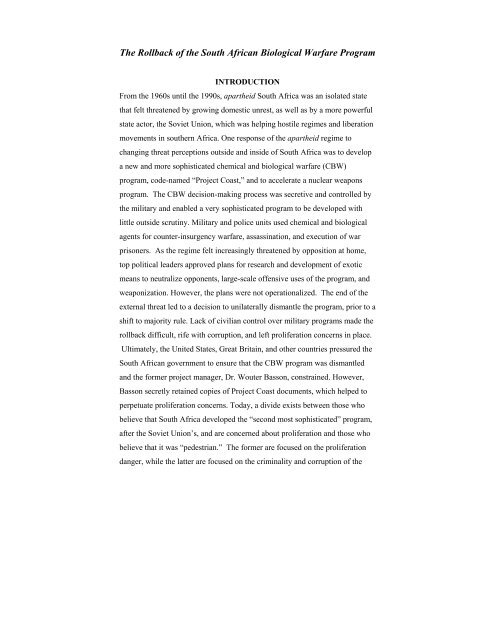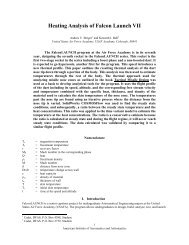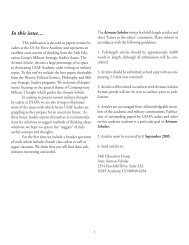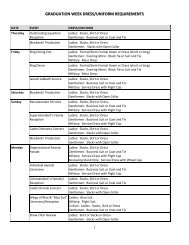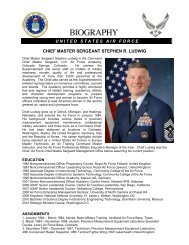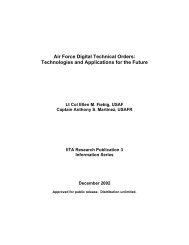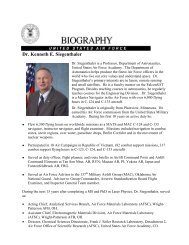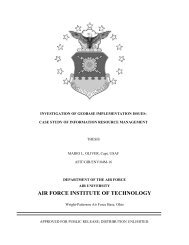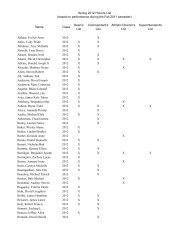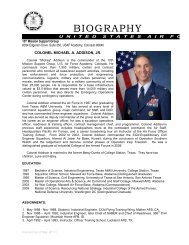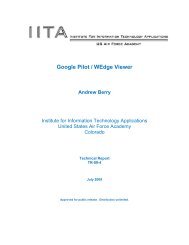the rollback of south africa's biological warfare program
the rollback of south africa's biological warfare program
the rollback of south africa's biological warfare program
You also want an ePaper? Increase the reach of your titles
YUMPU automatically turns print PDFs into web optimized ePapers that Google loves.
The Rollback <strong>of</strong> <strong>the</strong> South African Biological Warfare Program<br />
INTRODUCTION<br />
From <strong>the</strong> 1960s until <strong>the</strong> 1990s, apar<strong>the</strong>id South Africa was an isolated state<br />
that felt threatened by growing domestic unrest, as well as by a more powerful<br />
state actor, <strong>the</strong> Soviet Union, which was helping hostile regimes and liberation<br />
movements in sou<strong>the</strong>rn Africa. One response <strong>of</strong> <strong>the</strong> apar<strong>the</strong>id regime to<br />
changing threat perceptions outside and inside <strong>of</strong> South Africa was to develop<br />
a new and more sophisticated chemical and <strong>biological</strong> <strong>warfare</strong> (CBW)<br />
<strong>program</strong>, code-named “Project Coast,” and to accelerate a nuclear weapons<br />
<strong>program</strong>. The CBW decision-making process was secretive and controlled by<br />
<strong>the</strong> military and enabled a very sophisticated <strong>program</strong> to be developed with<br />
little outside scrutiny. Military and police units used chemical and <strong>biological</strong><br />
agents for counter-insurgency <strong>warfare</strong>, assassination, and execution <strong>of</strong> war<br />
prisoners. As <strong>the</strong> regime felt increasingly threatened by opposition at home,<br />
top political leaders approved plans for research and development <strong>of</strong> exotic<br />
means to neutralize opponents, large-scale <strong>of</strong>fensive uses <strong>of</strong> <strong>the</strong> <strong>program</strong>, and<br />
weaponization. However, <strong>the</strong> plans were not operationalized. The end <strong>of</strong> <strong>the</strong><br />
external threat led to a decision to unilaterally dismantle <strong>the</strong> <strong>program</strong>, prior to a<br />
shift to majority rule. Lack <strong>of</strong> civilian control over military <strong>program</strong>s made <strong>the</strong><br />
<strong>rollback</strong> difficult, rife with corruption, and left proliferation concerns in place.<br />
Ultimately, <strong>the</strong> United States, Great Britain, and o<strong>the</strong>r countries pressured <strong>the</strong><br />
South African government to ensure that <strong>the</strong> CBW <strong>program</strong> was dismantled<br />
and <strong>the</strong> former project manager, Dr. Wouter Basson, constrained. However,<br />
Basson secretly retained copies <strong>of</strong> Project Coast documents, which helped to<br />
perpetuate proliferation concerns. Today, a divide exists between those who<br />
believe that South Africa developed <strong>the</strong> “second most sophisticated” <strong>program</strong>,<br />
after <strong>the</strong> Soviet Union’s, and are concerned about proliferation and those who<br />
believe that it was “pedestrian.” The former are focused on <strong>the</strong> proliferation<br />
danger, while <strong>the</strong> latter are focused on <strong>the</strong> criminality and corruption <strong>of</strong> <strong>the</strong>


